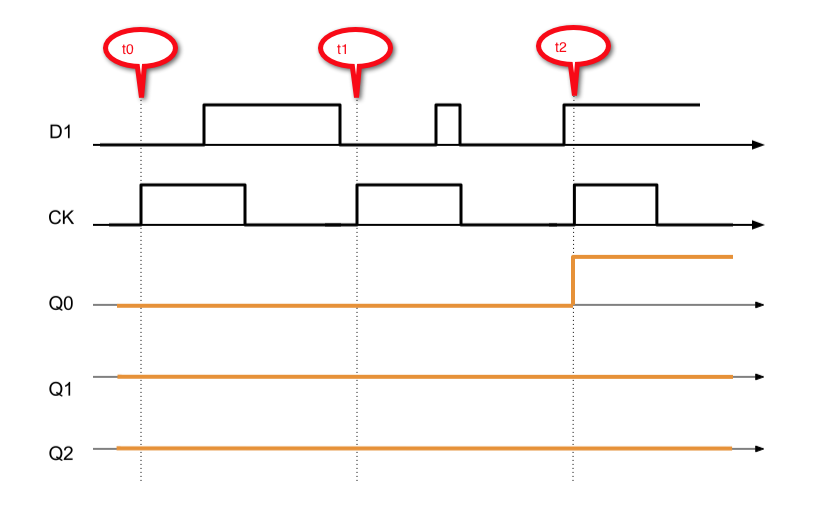Difference between revisions of "CSC270 Homework 4 Solution 2012"
| Line 13: | Line 13: | ||
<br /> | <br /> | ||
| − | + | * what happens at '''t0''': | |
| + | ** Just before t0, D1 is 0. So after t0, Q0 is going to be 0. | ||
| + | ** Just before t0, Q0 is 0. So after t0, Q1 is going to be 0. | ||
| + | ** Just before t0, Q1 is 0. So after t0, Q2 is going to be 0. | ||
| + | * What happens at '''t1''': | ||
| + | ** Just before t1, D1 is 0. So after t0, Q0 is going to be 0. | ||
| + | ** Just before t1, Q0 is 0. So after t0, Q1 is going to be 0. | ||
| + | ** Just before t1, Q1 is 0. So after t0, Q2 is going to be 0. | ||
| + | * What happens at '''t2''': | ||
| + | ** Just before t2, D1 is 1. So after t0, Q0 is going to be 1. | ||
| + | ** Just before t2, Q0 is 0. So after t0, Q1 is going to be 0. | ||
| + | ** Just before t2, Q1 is 0. So after t0, Q2 is going to be 0. | ||
| + | |||
<br /> | <br /> | ||
Revision as of 16:15, 29 February 2012
--D. Thiebaut 14:46, 29 February 2012 (EST)
<onlysmith>
Problem #1
No, it is not a flip-flop. It flips, but doesn't flop. When you block the NAND, you store a 1 in the flip-flop. When you block the NOR, you also store a 1. There's no way to store a 0. It's not a flip-flop.
Problem #2

- what happens at t0:
- Just before t0, D1 is 0. So after t0, Q0 is going to be 0.
- Just before t0, Q0 is 0. So after t0, Q1 is going to be 0.
- Just before t0, Q1 is 0. So after t0, Q2 is going to be 0.
- What happens at t1:
- Just before t1, D1 is 0. So after t0, Q0 is going to be 0.
- Just before t1, Q0 is 0. So after t0, Q1 is going to be 0.
- Just before t1, Q1 is 0. So after t0, Q2 is going to be 0.
- What happens at t2:
- Just before t2, D1 is 1. So after t0, Q0 is going to be 1.
- Just before t2, Q0 is 0. So after t0, Q1 is going to be 0.
- Just before t2, Q1 is 0. So after t0, Q2 is going to be 0.